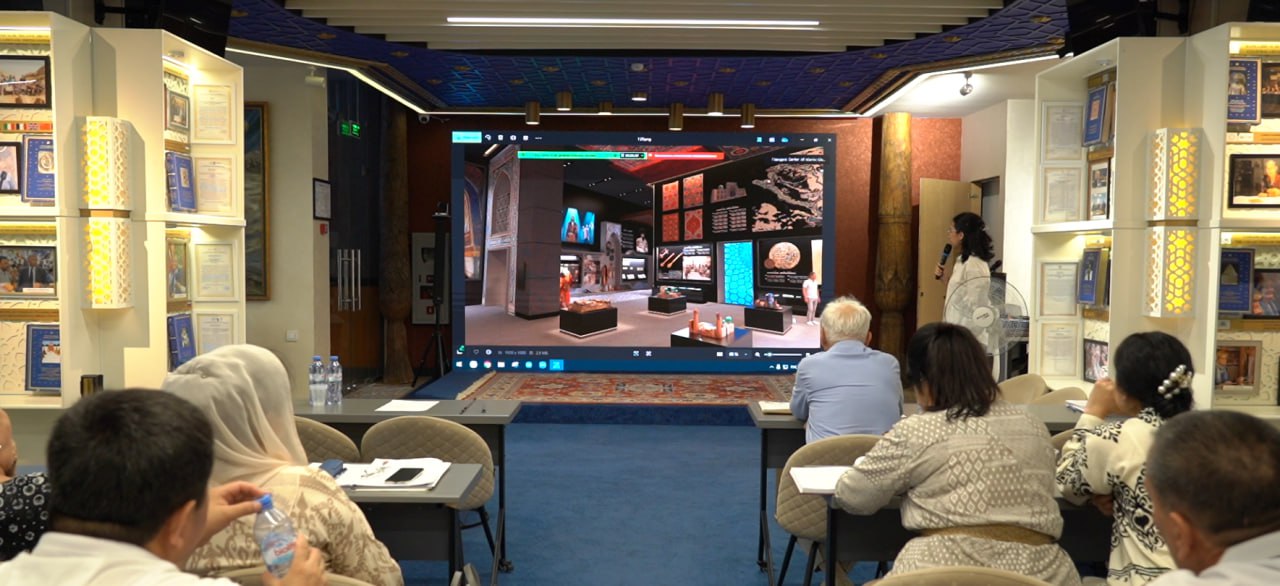A modern approach to the era of Uzbek khanates: what awaits us?

At the Museum of the Center of Islamic Civilization in Uzbekistan, key issues regarding the design, project outcomes, and enrichment of content for the section “The era of Uzbek Khanates” were discussed.
The discussion covered the visual presentation of the section’s exposition, the role of category-1 projects within it, the selection of rare items and artifacts from national and foreign collections, the preparation of a list of exhibits required for temporary exhibitions, the creation of models and mock-ups, the placement of works of fine art, as well as the implementation of technical specifications related to category-2 projects.
According to the information shared during the working group discussions, the concept of the exposition is being developed to encompass tangible and intangible heritage objects specific to each khanate.
From the Shaybanids to Kokand
The right part of the exposition is dedicated to the Shaybanid era, where manuscripts on Islamic sciences, education, and literature will be displayed. Showcases enriched with the portrait of Abdullakhan and mock-ups will complement the presentation.
Following the Ashtarkhanids, the Bukhara Khanate sector will highlight Ahmad Donish’s activities, the Mir Arab madrasa, the Shashmaqom musical tradition, works related to Komil Khorezmi, as well as a map of the Zarafshan River and immersive shows.
During the discussion, a proposal was raised to relocate the part dedicated to Komil Khorezmi to the Khiva Khanate sector. In the Khiva section, models of Ichan Qal’a and the Juma Mosque, costumes, and musical instruments from local and foreign collections are planned for display.
The Kokand Khanate section will feature archival photographs related to papermaking, video content dedicated to the literary environment, and works of applied art.
The central and final sections of the exposition
In the central part of the exposition, a graphic depiction of the facade of the Tilla-Kori Madrasa at Registan will be placed, serving to highlight the theme of the “Second Renaissance”.
The final part of the exposition will present creative works of artists, infokiosks dedicated to rulers, and special showcases based on the concept of the “Wall of Time”, Russia’s company “Planet 9” has been assigned responsibility for creating this content.
The meeting also endorsed media projects such as “Mohlaroyim”, “Kokand Paper”, “Architecture of the Shaybanid Era”, and “The Irrigation System of the Khorezm Khanate”, recommending their review by the Scientific Council.
A media project in the “Language” of youth
Of special note is an interactive media project in the “language” of youth, to be implemented in a new technological format based on Gulkhani’s famous Zarbulmasal, which contains more than 400 folk proverbs.
“Through this project, each proverb will be heard through the voices of the characters in the work. Implemented in collaboration with animators, this initiative is of great importance for children’s moral upbringing and for understanding the meaning and essence of proverbs”, said Husan Maqsudov, senior lecturer at the Alisher Navoi University of Uzbek Language and Literature.
He added that special attention is being paid to the works of Turdi Faroqiy in the Kokand Khanate sector. His literary heritage, consisting of 18 poems, is being reanalyzed and presented as a source reflecting the socio-political environment of the Bukhara Emirate. These literary analyses are being prepared with the participation of specialists from the Alisher Navoi University of Uzbek Language and Literature.
At the end of the meeting, a general schedule reflecting the responsible specialists, their tasks, as well as the sectors and themes of the projects, was presented to participants. Based on all the proposals received, final decisions are to be made in collaboration with designers and the French company “Avesto Group”.
Most read

Over 100 experts from more than 20 countries of the world are in Tashkent!

President of Serbia Aleksandar Vučić visited the Islamic Civilization Center in Uzbekistan

The Center for Islamic Civilization – a global platform leading towards enlightenment











